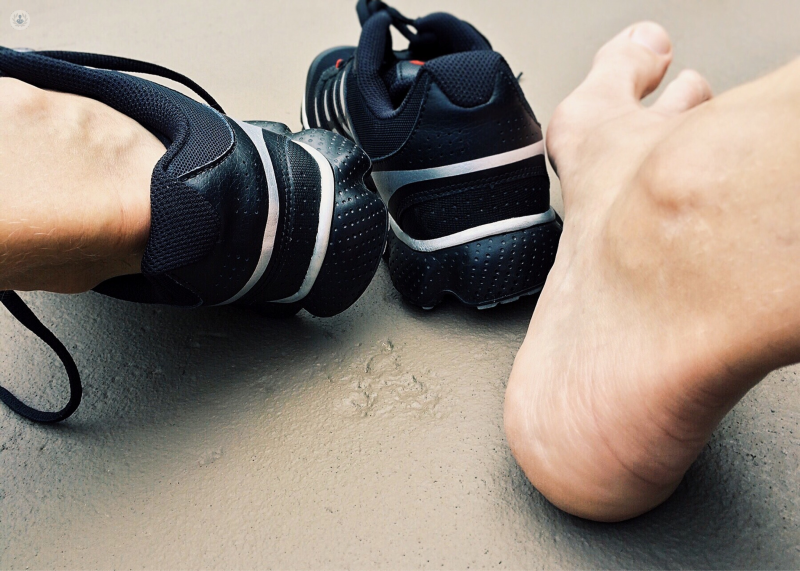Modern treatments for plantar fasciitis
Written by:Plantar fasciitis is a common injury, but in the past it tended to be underdiagnosed and there were few non-invasive treatments available. In recent years, however, treatment options have improved dramatically. We asked leading orthopaedic surgeon Mr Charles Willis-Owen what patients can expect from a modern orthopaedic clinic in the UK.

How has our understanding of plantar fasciitis improved in recent years?
Plantar fasciitis is a really common condition either as an overuse injury in sportspeople, or also as a degenerative condition in less active people. We have got much better at recognising and diagnosing it with the use of either ultrasound scanning or MRI.
There has been a longstanding, but incorrect belief that bone spurs in the heel are the cause of plantar fasciitis, but we are finally getting to the stage that most doctors have realised that the correlation here is poor and heel spurs per se are rarely of any significance.
What causes plantar fasciitis?
How can shockwave therapy help with heel pain?
Extracorporeal shockwave therapy is a really effective non-invasive treatment for plantar fasciitis. It simply needs a five-minute treatment for three consecutive weeks and following this about 80% of people will get better. However, it does take a bit of patience and takes about six months to fully resolve.
Advice is still a key part of our treatment. It is useful to see a specialist who can help address any underlying training errors if you are an athlete, or biomechanical issues that may have been the underlying cause, as well as teaching a regimen of morning stretching to help speed recovery and prevent recurrence.
Does heel pain respond to stem cell therapy?
This is not a condition where stem cell therapy is usually needed because the results of shockwave therapy are so good. However, when shockwave therapy has failed, further treatment options are a biological injection prepared from a patient’s own blood, or orthopaedic surgery.
What other recent innovations have improved treatment for heel pain?
Although surgery is rarely needed nowadays, there have been big advances from the old-fashioned and very unpopular open surgery techniques we used to practice.
Minimally-invasive keyhole surgery is very successful, safe and quick. The operation takes about 15 minutes per foot and patients are encouraged to walk on the foot right after surgery. Normal day to day life is usually possible by two weeks – and maximum recovery is reached at six weeks.
To book a consultation with Mr Willis-Owen, click here.


